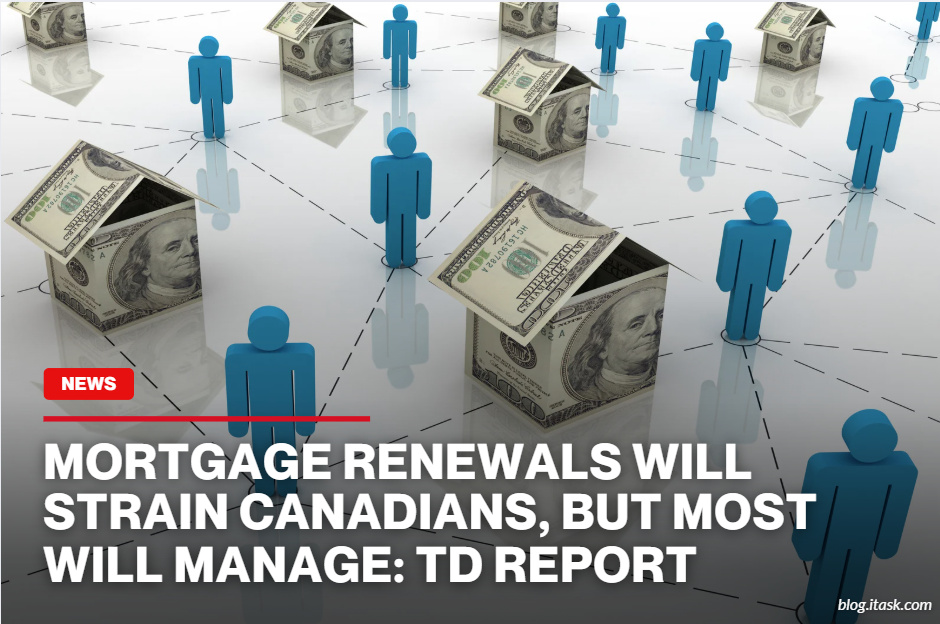Mortgage renewals will strain Canadians, but most will manage: TD report
Mortgage renewals will strain Canadians, but most will manage: TD report

Most Canadian homeowners are facing a squeeze when renewing their mortgages. Many took on five-year terms around 2020 when interest rates were very low. Now, as those loans renew, rates have climbed, pushing up monthly payments. One typical borrower might see their bill rise by about $320 a month.
But here's the twist: for the country as a whole, total mortgage payments are actually on a downward trend. That's because borrowers with large balances often have variable-rate or short-term loans. Thanks to rate cuts in 2024, these borrowers are seeing lower payments, which pulls down the total even as some face sharp increases.
In fact, about 60 percent of outstanding mortgages will renew by the end of 2026 and around 40 percent of those are expected to come with higher rates. Still, more than a third of renewals are in that early relief group benefiting from recent cuts or shorter terms.
Many homeowners are better prepared to handle this strain than they might appear. Since early 2020, home prices have climbed by roughly 25 percent. Financial assets are up by 45 percent, liquid deposits by 42 percent, and disposable income for mortgage holders has grown 27 percent. These gains give borrowers more tools like tapping equity, refinancing, or lengthening amortization to soften renewal shocks.
Still, not all Canadians are equally cushioned. Lower-income households, particularly those heavily reliant on non-mortgage debt like credit cards and lines of credit, are more vulnerable. Non-mortgage debt makes up just a quarter of total household debt but commands nearly half of debt payments. Delinquency is already rising in this segment.
In short, the renewal wave will put pressure on many Canadians, but for most, it won't be a disaster. Aggregate debt payments are easing and many households have built up enough savings and equity to cope. Still, risks linger, especially for the most stretched borrowers and those in high-cost provinces, which means this strain may continue to dampen spending and confidence even as the worst of the discomfort is avoided.
